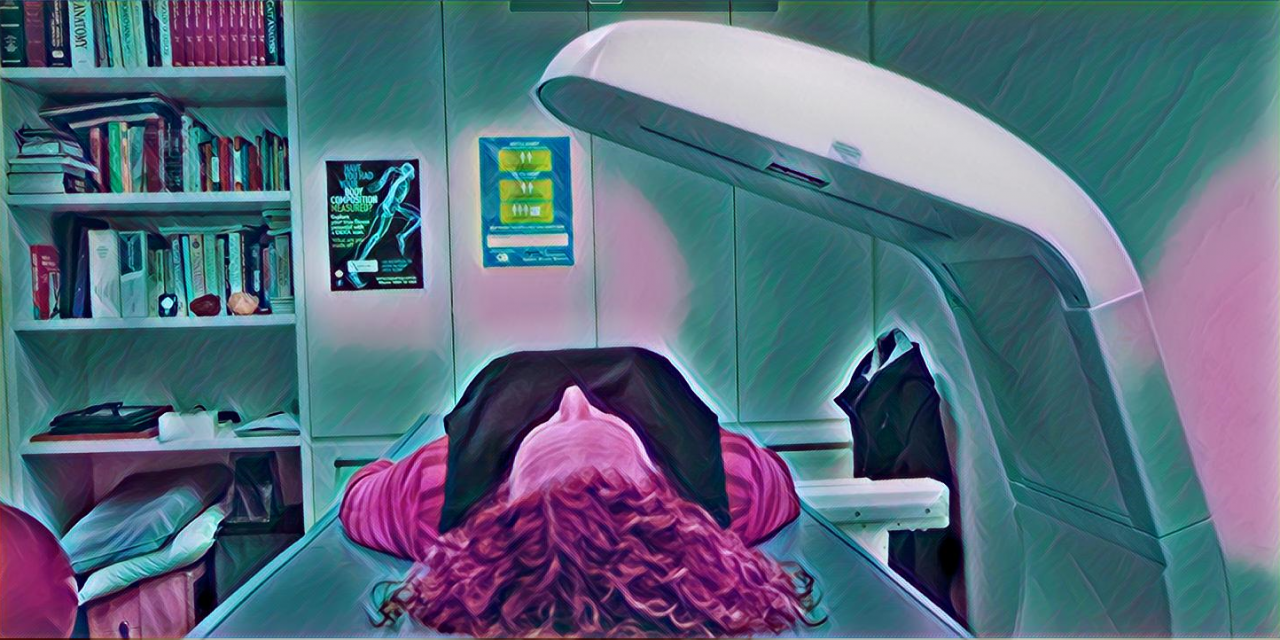Asking your bathroom scales to guide your health and fitness regime is unlikely to yield the answers you need, so being curious, I had a DEXA scan.
What is a DEXA scan?
A DEXA scan sweeps over your body giving you bone mineral density, muscle mass and fat mass measurements. These measurements are proving to be effective in guiding my health choices.
For many people, including me, going in for the scan that reveals all about my bones, my fat, and my muscle feels a bit confronting.
I have a few background concerns about the amount of fat around my waist and my potential visceral fat, given the hormones that are stored and triggered by visceral fat. There are links between visceral fat and diseases such as diabetes, heart disease and depression. This was one measurement I wanted but didn’t want.
I wanted to check on my bone density given I am peri-menopausal. And being aware of sarcopenia, I wanted a measure of my muscle mass.
The DEXA scan is completely painless. You can see the DEXA scan taking place and also hear Dr Jarrod Meerkin giving me the low down of the results.
So how did I measure up?
Lots of ‘averages’ and ‘normals’ and ‘in the ranges’, with a little bit of ‘oh dear’, and weirdness.
Bone density
My bones weigh 2.4kg, and total body bone density is normal.
What this means for me is that I need to keep up with my impact exercise and maintain a diet that will provide the nutrients that my bones need. This means I will be eating lots of dark green vegetables and looking for foods high in calcium and vitamin D.
Now I have a baseline measurement for bone density, and over the years I can track the health of my bones compared to this point.
Android/gynoid fat
Android fat is fat that sits in the waist area. It is not good for you. Gynoid fat is around the hips and thighs. Not ideal to have too much of it, but it doesn’t seem to contribute to, or be a marker for, your overall health.
The ratio of android to gynoid is the marker. Men with waist to hip ratio of more than 1 and women with ratio more than 0.8 have increased risk of ill health including cardiovascular disease, diabetes, stroke and cancer.
Not such good news for me. My ratio is 0.93 – a little above the 0.8 marker. So I was right to be concerned about the fat pocket over my tummy and the suggestion of visceral fat.
Muscle mass
My left leg is 600g lighter than my right!
The left leg is 7.5kgs of muscle, while my right is nearly 8.2kgs. I don’t list to the side as I walk and I have never noticed a dramatic difference when I exercise, so this was an interesting discovery.
Overall
I have instructions from Dr Jarrod Meerkin to lose 3-5kgs of body fat and to even up the muscle mass in my legs. My overall fat is within the normal range but is pushing for the upper limit of normal for women.
What to do?
I am not one to rush out and make a lot of changes. Better that I think things over a little and start to make some adjustments towards cleaner, nutritious food and regular exercise.
Stay tuned for more info on that as it happens.
Last Reviewed: 03-May-2017
Helen Barry
Latest posts by Helen Barry (see all)
- Fat, muscle, bone & DEXA - 03/05/17
- Preparing for Ayahuasca ceremonies - 14/04/17
- Your Ayahuasca retreat packing list - 10/04/17






